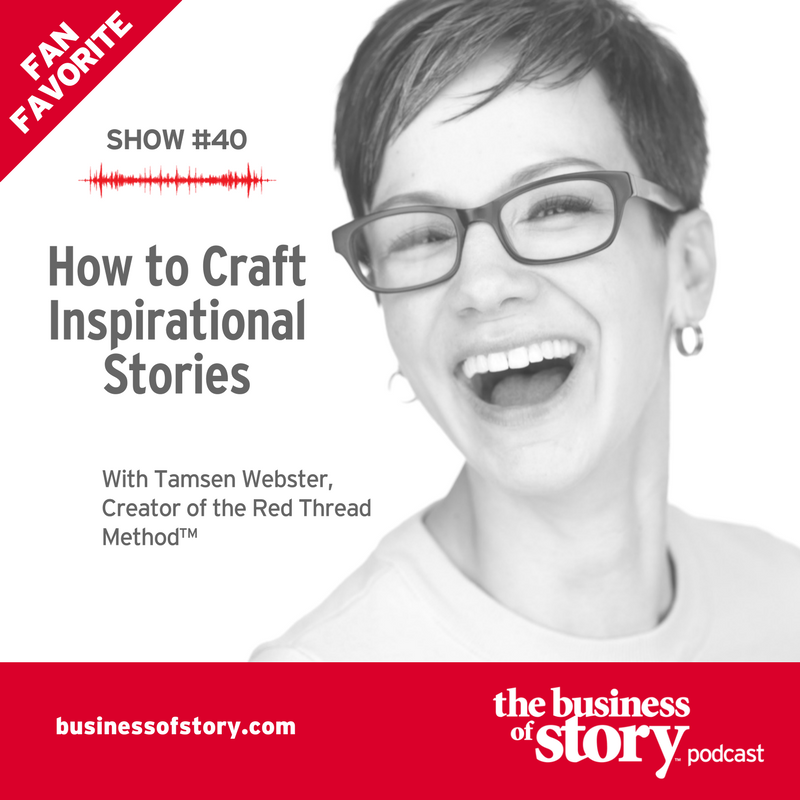No, really — who are you for? (And before you get all fidgety about “who” versus “whom,” I know it’s “whom.” But few of us talk like that in real life.) Which brings me back to my question:
Who are you for?
See, when you answer that question — first, before you do anything else — you make the rest of your work much, much easier. Each word is easier to find, each sentence is easier to speak.
And if you want it to be harder? Well, then, I (and this article) are not for you.
But if you want to make your message big enough to move markets, and minds, then let’s make “easy” be the new “hard.”
It all starts with that question:
Who are you for?
The tricky part: try to answer the question without mentioning demographics. No age, gender, title, revenue or income. Those things are important, but too often we start there, rather than end there — if we answer the question at all.
Why shouldn’t you start there? Because demographics don’t tell you enough to answer the hard questions.
Answering hard questions makes writing easy
Imagine you’ve chosen an ideal audience of 25- to 34-year-olds who work in marketing and make $50-75,000 a year. That seems nice and specific, doesn’t it?
- Why would they care about your message (assuming you have one)?
- How much detail do they need about it?
- What style will work best for them?
Having those answers would make writing pretty easy, wouldn’t it?
But I’m guessing you have a lot of answers that start with, “It depends.”
“It depends on whether they’re closer to 25 or 34.”
“It depends on that they’re marketing job actually is.”
“It depends on how much they make.”
Let’s say we make some choices with those “it depends.” Let’s say our ideal audience member is 25, a copywriter earning at the low end of our scale.
Can we answer those hard questions now? Um…probably not. Or, at least not with any specificity, because we still don’t know who they are. How their mind works. How ready they are to hear your message. How expert.
It’s the mindset that matters
Now imagine there’s a second person that, on paper, looks exactly the same. How likely is it that they’d have the same answers to our hard questions?
Not very. Because experience matters. Perspective matters. Mindset matters.
Mindset determines meaning. How we see the world determines why one thing is meaningful to us and another is not. Why one thing matters and another doesn’t.
So even if two people look similar on paper, one may be your ideal audience and the other may never be.
Here’ what that means: to make your message shine, you don’t need market specifics. You need mindset specifics.
But which ones?
The mindset “Mad Lib”
On the surface, finding mindset specifics sounds pretty hard. That might explain why we default to demographics so often….
But there’s good news: there’s a universal pattern for how we make meaning. It’s based on story.
We remember, we pay attention to, the same types of things. We find the same kinds of things meaningful.
What things? Things like a character’s actions and motivations. What someone wants. Why they want it. What gets in the way.
And that means we can use that universal pattern to figure out the mindset we’re creating a message for.
We can make it easy.
How?
Remember that children’s game Mad Libs? It was a pad of paper, with a pre-written story on every page. But every story had blanks that you got to fill in — nouns, verbs, adjectives, etc. — often with hilarious results.
In this case, we’re not going for hilarity, we’re going for clarity, but the “fill in the blank” idea is the same.
Here it is, your mindset Mad Lib:
I’m for [category of people] who want [X], value [Y], and struggle with [Z].
Let’s look at each part.
“[Category of people]”
This is as close as you get to get to using a demographic. This is where you decide between managers or staff, experts or novices, on specific roles or genders, and so on.
You can also leave it as “people,” because it’s what comes next that makes all the difference.
“Who want [X]”
This is what the above category of people want. It might be a goal (“to differentiate themselves in the marketplace”). It might also be a problem they actively want to solve (“to resolve the tension between marketing and sales”).
Either way, it needs to be something the audience knows and would readily agree they want.
“Value [Y]”
This one seems minor, but in fact, it’s critical. Why? Because it characterizes how your audience wants to get [X].
Let’s take the “differentiation” example, above. Your audience could value “contributions from their team”. Or “process.” Or “creativity.”
Each answer defines something they view as non-negotiable — a belief, a value, an assumption.
More importantly, each shapes the kind of message that will be most meaningful to them.
“But struggle with [Z]”
Any good story — and message — needs conflict. Here’s where you define what that is in your audience’s head.
What’s the biggest issue they’re facing when it comes to their “want”?
Are the “want” and “value” at odds with each other?
Do they know what they want and how, but not how to get there?
The Struggle defines what problem your message solves for your audience.
Together with the other two, you’ve set up the universal pattern we talked about earlier:
What someone wants. Why they want it. What gets in the way.
Putting it all together
But what does that look like?
Here’s the mindset Mad Lib for this article. It’s for:
- Message-makers (writers, speakers, thought leaders)
- Who want to turn their ideas into action,
- Who value self-efficiency (they want to do what they do on their terms, without wasting time or energy)
- But struggle with how to do it, how to find their most efficient path from potential to reality
With that filled out, a lot of the big challenges of starting to think or write or speak were already solved for me. I knew:
- The goal I needed to start with: “how to make your message big enough to move markets, and minds”
- The problem to overcome: using “market” rather than “mindset” to define audience (because mindset is more efficient)
- The qualities the solution needed: easy (one sentence), customizable (fill in the blank), defensible (based on research)
The result? Clarity on mindset that lead to clarity of message — for me, and hopefully for you, the audience. And now you know how to get that clarity, too. So, back to the original question:
Who are you for?
Listen to Tamsen Webster on episode #82: How to Focus Your Story to Grow Your Business








